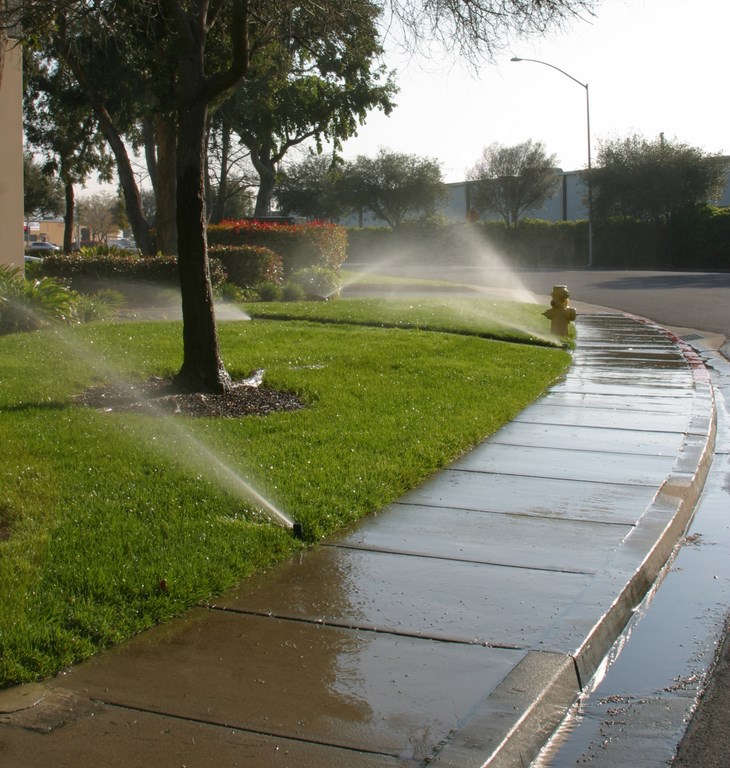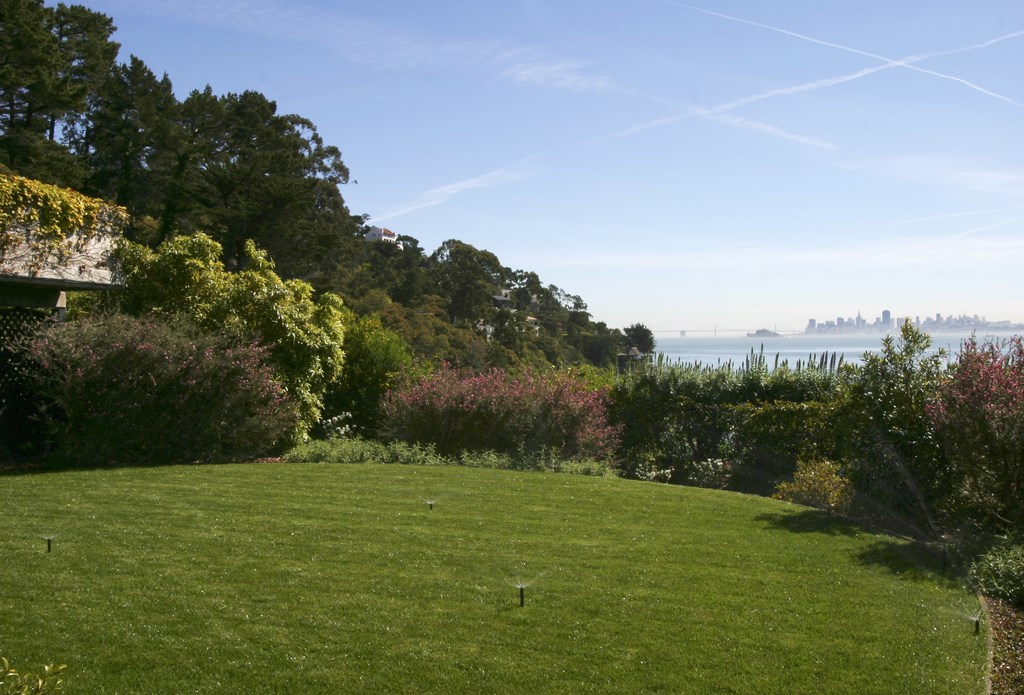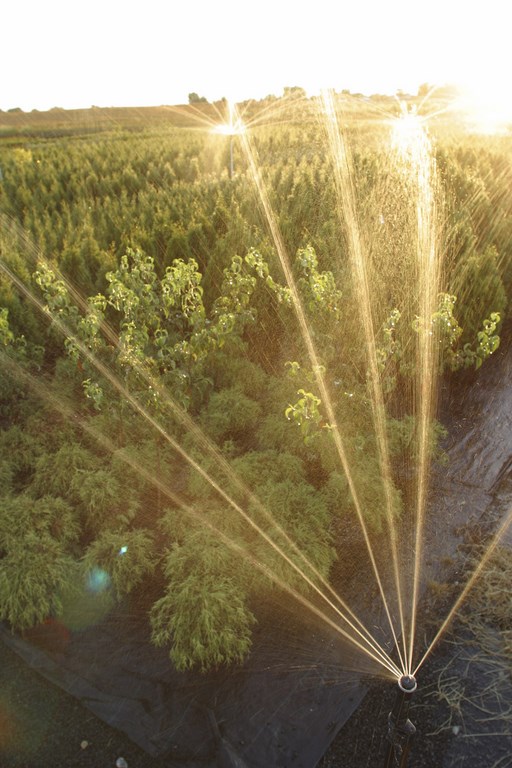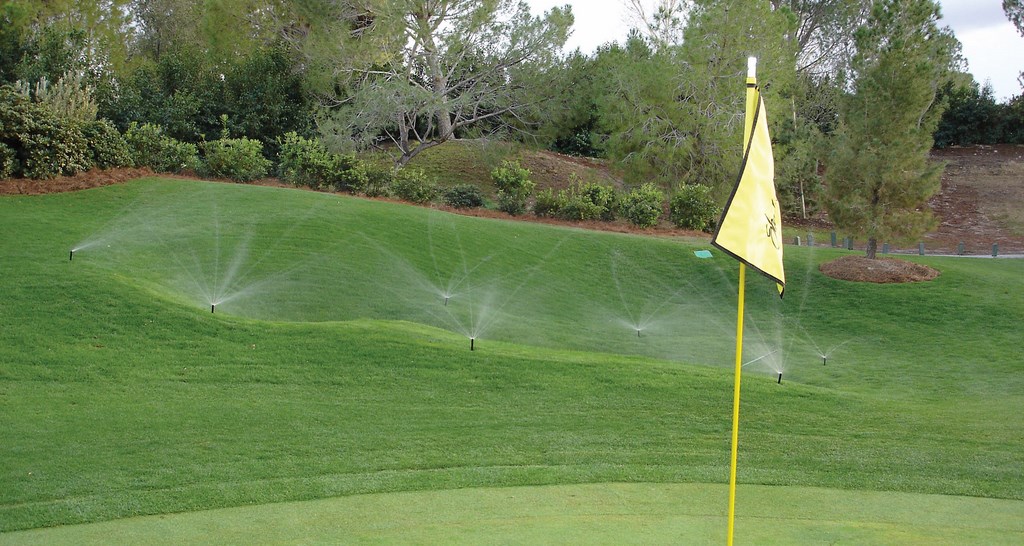Water Wise
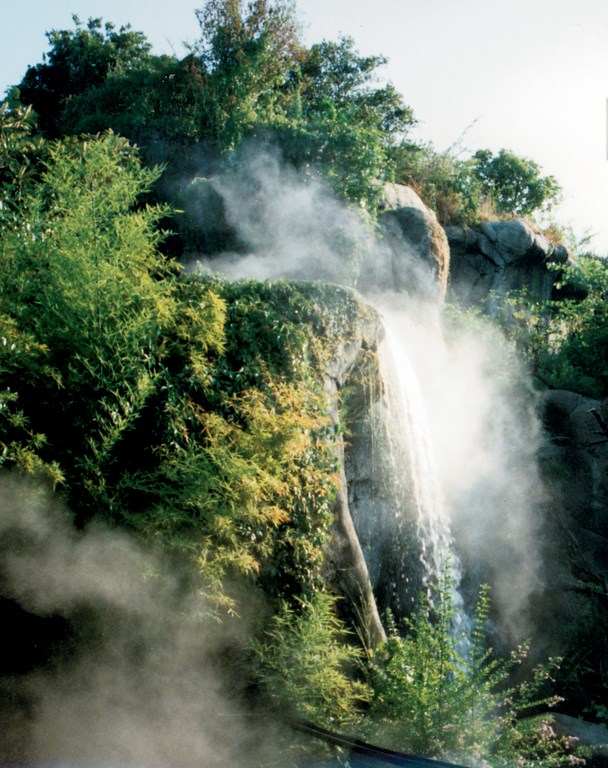
Conserving water in a serious way is something many of us have had to do at one time or another. Whether it has resulted from drought or some other condition affecting local supplies, we know that any sort of shortage has significant implications not just for us, but for our communities, clients and landscapes as well.
In those landscapes, water conservation is about finding ways to reduce water use and coming up with more efficient ways to use it. This is essential to ensuring the survival of plants (and our livelihoods) and has to do with giving gardens the amount of water they need to thrive: Too little, and plants will shrivel up and die; too much, and many will drown just as surely.
For the most part, what landshapers encounter is the need to cope with shortfalls and pronounced dry spells rather than floods, which is why most professionals install irrigation systems that make it easier for clients to sustain their landscapes when the skies aren’t doing their part.
But not all irrigation systems are created equal: Many are poorly designed or fall victim to one-size-fits-all thinking in which the same basic system gets installed everywhere without consideration of site characteristics. Lots of others are simply outmoded and inefficient. As a result, the use of water for landscape maintenance often becomes a target when serious water shortages arise.
As an irrigation specialist, I see little reason for landshapers to end up in the cross-hairs when these problems surface in the water supply. Methods and technologies exist that can help professionals and their clients conserve water in ways that make for happy plants – and happy communities at the same time.
BASIC TECHNOLOGIES
Saving water isn’t just a matter of turning off hoses or cutting back on watering schedules. Indeed, many different solutions exist for achieving the same outcome without sacrificing plant health to the cause. Understanding the available technologies and how they work together to form efficient systems is the key to playing a part in water conservation.
Probably the most basic (and most overlooked) means of conserving water with an irrigation system is through proper design – that is, properly spaced and nozzled heads that are regularly and correctly maintained, with capability for making necessary seasonal adjustments.
Typically, homeowners and commercial-property managers compensate for system deficiencies and problems by increasing watering times on timers or supplementing scheduled sprinkling with hand-watering of dry spots or perceived problem areas. Most times, this results in over-watering that can lead to marshy conditions in lawns or, worse and more wasteful, runoff as a result of the increased run times.
Even if a system is perfectly designed and expertly maintained, there can be occasional problems that will lead homeowners and groundskeepers to overreact and begin cycles of wasteful watering. And it’s all increasingly unnecessary, because supplemental technologies exist that can make any system more efficient.
[ ] The newest of these are the evapotranspiration-based controllers, otherwise known as “ET” or “smart” controllers. These gather and use information from local weather stations to recalculate and control run times automatically.
| It’s obvious when a system hasn’t been set up and isn’t being maintained with water conservation in mind. The lawn may be well-watered, but so are the sidewalks and gutters – a waste of resources that is easily avoided with thoughtful system design and upkeep. |
[ ] There are also more-efficient irrigation heads, many of which are easily adapted to existing systems. Rotator-style heads, for instance, offer better distribution uniformity – that is, they cover their distribution patterns better than many of the existing forms of irrigation – and can save up to 30 percent of overall water usage.
[ ] Drip-irrigation systems that apply water directly to the surface of the soil above the root zone of the plant are another solid choice because they minimize evaporation and feed water more directly to the plants’ roots. With more water available for direct uptake by root systems, less water is needed overall.
[ ] Fertilizer-injection systems approach water conservation from a different angle: Where traditional fertilizers require water above and beyond regular irrigation times to help them percolate into the soil, directly injected fertilizers don’t require the supplementary water – and nutrients reach the roots more directly as well.
[ ] Also working below grade is a hydrochanger, a type of water-conditioning system that alters the molecular structure of the water so it doesn’t bind as quickly to the soil particles, instead becoming more readily available for uptake by plant roots.
[ ] In more common use are moisture sensors that, when placed directly under plants’ root zones, are just about the most easily applied of all water-saving technologies. Some of these devices are known as tensiometers – tools that measure resistance levels in the soil dictated by moisture. These sensors are tied into irrigation controllers that will shut down sprinkler systems when too much moisture is detected.
[ ] Simple rain sensors can also be set up to override sprinkler clocks when precipitation is detected. Most manufacturers suggest using rain sensors in addition to any other technology: Even a sophisticated evapotranspiration controller won’t override an irrigation system when it’s raining if the weather station supplying rain information is too far from the site.
Rain sensors should probably be included in every irrigation-control system, basically because nothing gets concerned citizens more up in arms than the sight of a sprinkler system in operation during a good downpour. If you can’t be certain someone will be on hand to shut down a system down manually, rain sensors completely eliminate this concern – an inexpensive add-on that makes a big difference.
DESIGN CONSIDERATIONS
No matter which of these technologies you choose to use, there are many factors to consider when designing a water-conserving irrigation system.
As suggested above, what works in one space will never be exactly appropriate for another. Site-specific conditions including slope, soil type and plant varieties all play roles in driving system design. On one site, for example, a large tree might shade most of the front yard, reducing the amount of water needed. Next door, however, you might encounter a tree-less space with a perennial border that receives full sun all day long.
Other factors include geographic region, weather patterns, wind, sun exposure and average annual rainfall.
Climatic conditions in mountainous areas are obviously different from those in desert or coastal areas, for example, and a coast in Oregon bears little resemblance to one in Florida. In other words, every site is distinct in some way or another and should be approached with that thought in mind.
| It would be easy if all irrigation tasks were as straightforward as this one, where the key to success on such a broad, open lawn has mostly to do with spacing the sprinkler heads properly and establishing appropriate watering times and durations. |
Given all these variations, concepts of water conservation take on different meanings in different parts of the country. In the Southwest, for example, the prevailing Mediterranean climate is often hotter than a desert. As a result, irrigating a site in Phoenix will always be a challenge if you’re working with a lot of landscaping.
In many areas, climate issues are compounded by rapid development that makes water a scarcer commodity – in southern California, for example. The picture is completely different now in Pennsylvania, where plentiful rains this year have taken water conservation off the community agenda. But a decade ago, in the face of a persistent, multi-year dry spell, it was a huge issue in many parts of the state.
It seems, in fact, that the only time we all think seriously about water conservation is during drought years, but the fact of the matter is that pressure on water systems nationwide grows every day and that landshapers in particular have a role to play in service to their clients, their communities and the plants in the yards and gardens they’ve designed and installed.
No matter how you view the future and no matter where you live and work, the simple reality is that water will be subject to shortages because it’s a finite resource. We’re so accustomed to having as much water as we need and want and, as a result, tend to take it for granted. I’d like to suggest that we have to face facts and start working to address the situation and play a role in solving the problem rather than contributing to it.
EFFECTING CHANGE
Today’s water-conservation movement is being driven on several fronts – by landshapers, the green industry and its suppliers on the one hand and by state, local and federal governments on the other. Somewhere in between are homeowners and potential clients who are interested both in being part of the solution and in saving money on their utility bills.
The immediate result of all this directed concern has been the emergence from water agencies and the government of programs designed specifically to address and encourage water conservation. Manufacturers of irrigation systems (including my company, Ewing Irrigation of Phoenix) have joined the march, developing new systems and fielding technical representatives who work full time with landshapers to develop water-saving solutions on site.
A common problem in the field has to do with the learning curve: That is, landshapers first need to be shown that the product actually works, either through demonstrations or, more easily but less empirically, through product literature. Suppliers know that it takes time for technologies to be adopted by professionals – and accordingly help the process along through sample programs and special discount packages.
| In critical commercial applications such as agriculture, the big adjustments in system design have to do with scale and precision of control. These areas are large and the water volumes may be high, but the aim is still delivering the right amount of water to the right places. |
In some cases, direct supplier involvement is called for, especially when a contractor has a problem site. These become educational opportunities in which all possibilities are considered and many are applied, and there’s no substitute for this sort of hands-on experience in introducing landshapers to the full range of water-conserving possibilities.
In these cases, a supplier does the heavy lifting, lets the system run for several weeks and lets both contractor and homeowner see the results before checking in on their levels of satisfaction.
Ultimately, of course, it is homeowners who need the education most, because they’re the ones who ultimately pay the up-front costs for water-conserving systems in order to save in the long run. But this certainly doesn’t leave landshapers out of the loop: When a homeowner asks for an irrigation system that saves water, you need to know how to respond.
Even in areas where you feel no current pressure to work with water-conserving systems, it is likely that, before too long, the rules will tighten and you’ll need to know all about methods for operating within the regulations. Even before that happens, it’s likely you’ll run into clients who are conservation-minded and will expect you to know how to meet their needs.
This may mean short-term headaches as you figure all these technologies and issues out, but the payoff will be superior installed systems, obvious savings on the part of your clients and the increased referral business that springs from happy homeowners.
SOUND PRACTICES
Of course, the tables may be turned and you as a professional may be called on to inform your prospective clients and persuade them that an investment in a good water-conserving irrigation system is a wise one.
If that’s the case in your market, you have a bit more work to do, but you must remember that suppliers have your back, offering plenty of data (supplemented by persuasive information from water and environmental agencies) to help you convince clients this is the best course to take.
Eventually, all of this will even out: Landshapers and irrigations specialists will know what’s available and what to do; homeowners will have developed the knowledge they need to become intelligent participants in this part of the design/build process; and it’s a certainty manufacturers will continue to develop products and do all they can to stay a step or two ahead of the market’s current needs.
| More and more irrigation systems are being used on spaces with complex contours, as with golf courses. These are cases in which the use of sensors and sophisticated control equipment becomes critical: Neither over- nor under-watering is in any way acceptable. |
The fact is, however, that no single entity is currently taking the lead when it comes to water conservation. Instead, it’s been very much a combined effort, basically because everyone who gets involved sees water conservation as a good idea – good for the environment, good for the long-term sustainability of our society and good for everyone’s pocketbooks. It’s a win-win, and it has the added benefit of making the green industry look very good indeed.
If we don’t respond appropriately and make good-faith efforts to conserve, it’s not tough to envision a regulatory climate in which traditional landscapes might be restricted or rendered difficult to maintain under the rules. Think about Santa Barbara, Calif., where water restrictions seriously limit planting palettes and have led some homeowners through the years to replace their lawns with artificial turf or apply green paint to hide the dead patches.
Bottom line: It’s possible to develop systems that meet landscapes’ needs with remarkable precision these days. It’s all about knowing what’s available – or being aware at least that good water-conserving systems are within reach if you ask the right questions and challenge your suppliers to lend you a hand. Ultimately, it’s about delivering on our commitment to our clients not just to plant gardens, but also to plant sustainable gardens.
James Minnich is the Regional Operations Manager for Ewing Irrigation in the Los Angeles/Orange County, Calif., area and has more than ten years’ experience serving southern California’s green industry professionals. He is a member of the board of the Los Angeles/San Gabriel Valley Chapter of the California Landscape Contractors Association and holds a bachelor’s degree in landscape architecture from California State Polytechnic University, Pomona.











